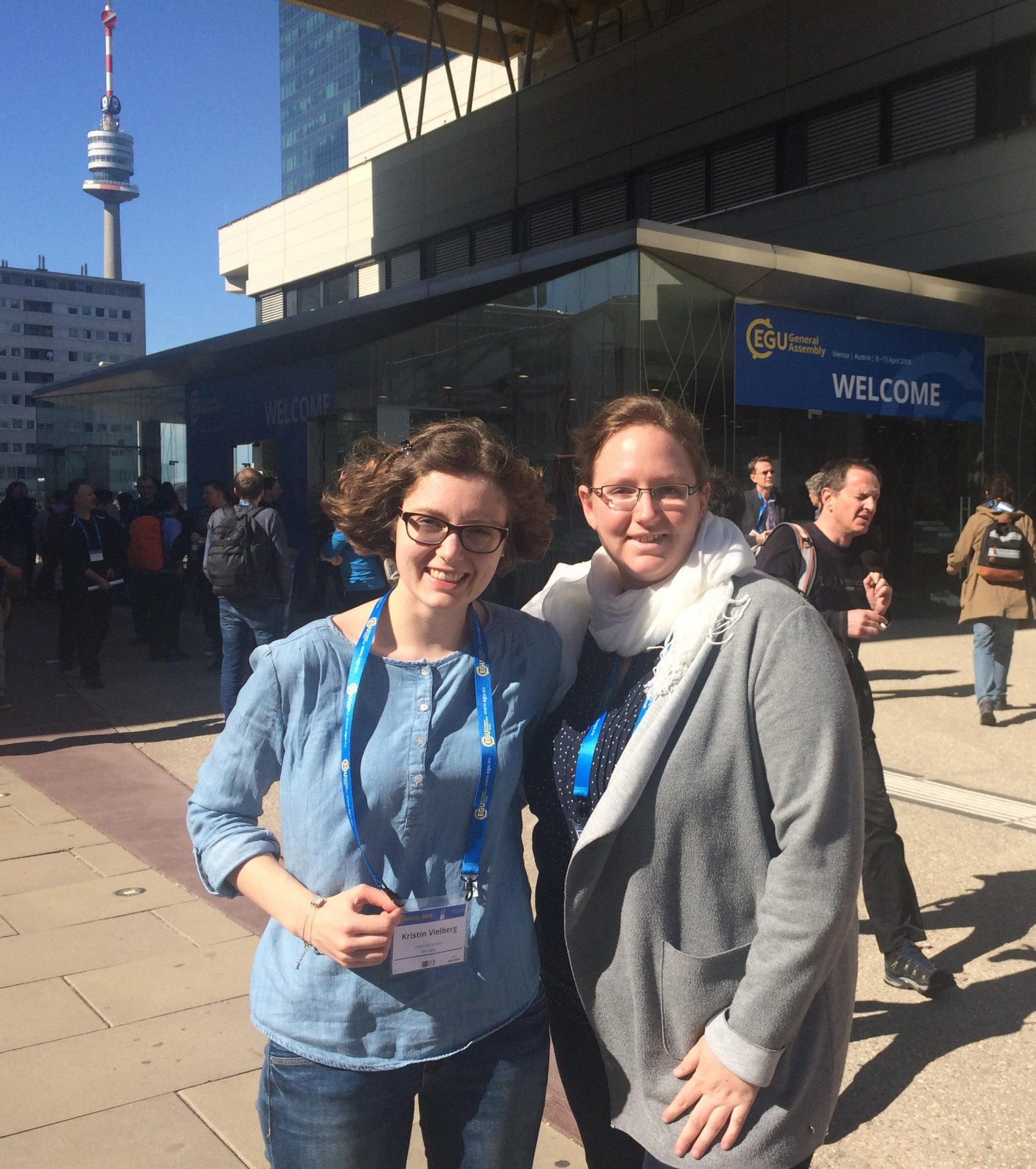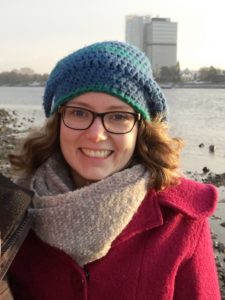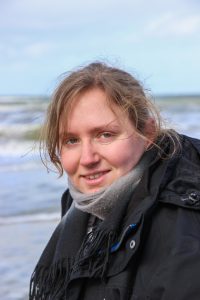
One day in January, we heard it through the grapevine that we were supposed to submit abstracts to an event called EGU. So we asked ourselves: What exactly is EGU? Our colleagues told us: ‘EGU is a huge, international conference worth going. And you will have a lot of fun.’ So we submitted our abstracts and hoped for the best. Three months later, we entered the airport with a poster box and some of our colleagues. Immediately, the excitement started seeing at least 20 poster boxes on the same flight. But our flight got canceled. So, instead of joining the ‘Opening Reception’ in the evening, we practiced queuing (which was helpful later for coffee and beer at EGU) at the airport. Luckily, we got a new flight and finally arrived in Vienna late at night.
The next morning, slightly tired and after the first of many coffees of the week ahead, we entered the tube going to Kaisermühlen/VIC. It was amazing to see the huge crowd swarming to the conference center. When we were supposed to put up Kristin’s poster in the early morning on board X4.256, we realized the extent of EGU. The hall was incredibly huge and there were five more of them! Of course, orientation was no problem, since both of us are geodesists 😉
So we went two floors up to attend the first session with an incredibly long name and the letter combination ST3.5/EMRP4.33/G4.4. This weird abbreviation turned out to be a joined session of three divisions: Solar-Terrestrial Sciences (ST), Earth Magnetism & Rock Physics (ERMPS) and Geodesy (G). This was totally Kristin’s topic, but Kerstin left after the first oral presentation to make her way to a HS session (Hydrological Sciences). Sometimes it is really hard to decide where to go, since there are always plenty of interesting sessions at the same time (666 in total!).
When in the late afternoon the queues for beer and wine got really long (which we already knew from the airport), it was time for the poster session. It surprised us that presenting our research was a lot of fun as we gained new research ideas and met interested people. However, we felt very exhausted after the poster sessions due to the low signal-to-noise ratio (incredibly loud and incessant noise).
By the end of our first day, we were more or less familiar with thousands of new abbreviations related to the conference itself and also to different research areas, e.g. GW is either used as groundwater or gravity wave. And after this first day of confusion, the EGU-app and even twitter turned out to be really helpful to schedule our time.
During the week, we also learned to appreciate the name badges as they were sometimes really helpful, when you accidentally run into famous people in your research area, who you have never met before. While attending short courses like “Rhyme your research” or “Serious games for Natural Hazards”, we met people from other disciplines as well. To survive the amount of input, we spent highly needed breaks in the sun by the river. During the breaks or at dinner, it was also great to catch up with new and old friends from summer schools etc. BTW, the food in Vienna is absolutely stunning.
Furthermore, we totally loved the Imaggeo photo contest – the pictures we voted for actually belonged to the winning pictures. Another must-see – at least in geodesy division – was the medal lecture on Thursday evening.
We will definitely come back next year! And the first thing Kerstin installs on her new mobile, is Twitter.
Edited by Katrin Bentel
Authors:
 Kristin Vielberg is a PhD student at the Institute of Geodesy and Geoinformation at the University of Bonn, Germany. Her research is on force modeling of satellites with the aim of better understanding the coupling of the thermosphere and the ionosphere. You can contact her at vielberg@geod.uni-bonn.de and her twitter handle is @KManyMountain.
Kristin Vielberg is a PhD student at the Institute of Geodesy and Geoinformation at the University of Bonn, Germany. Her research is on force modeling of satellites with the aim of better understanding the coupling of the thermosphere and the ionosphere. You can contact her at vielberg@geod.uni-bonn.de and her twitter handle is @KManyMountain.
Kerstin Schulze is a PhD student at the Institute of Geodesy and Geoinformation at the University of Bonn in Germany. She studies the assimilation of multiple data sets, including satellite and in-situ observations, into hydrological models. You can contact Kerstin at schulze@geod.uni-bonn.de and her twitter handle is @KExploringEarth.

